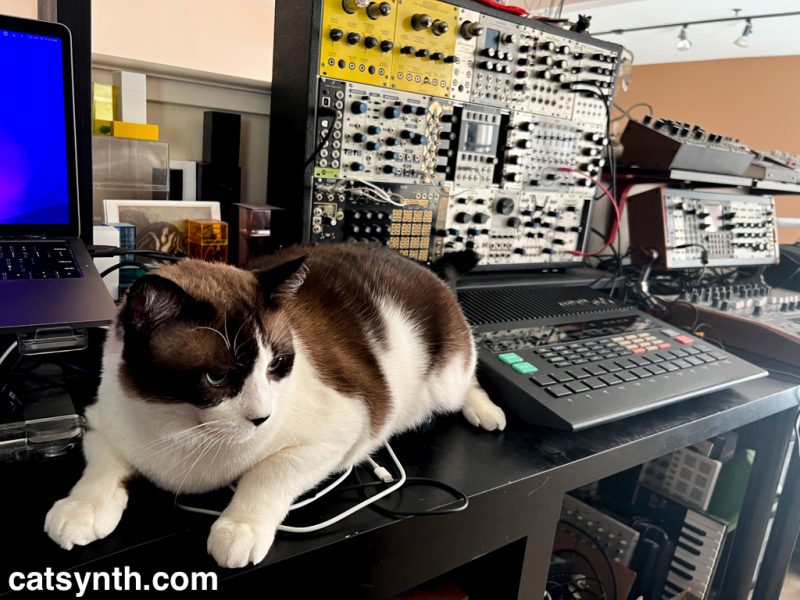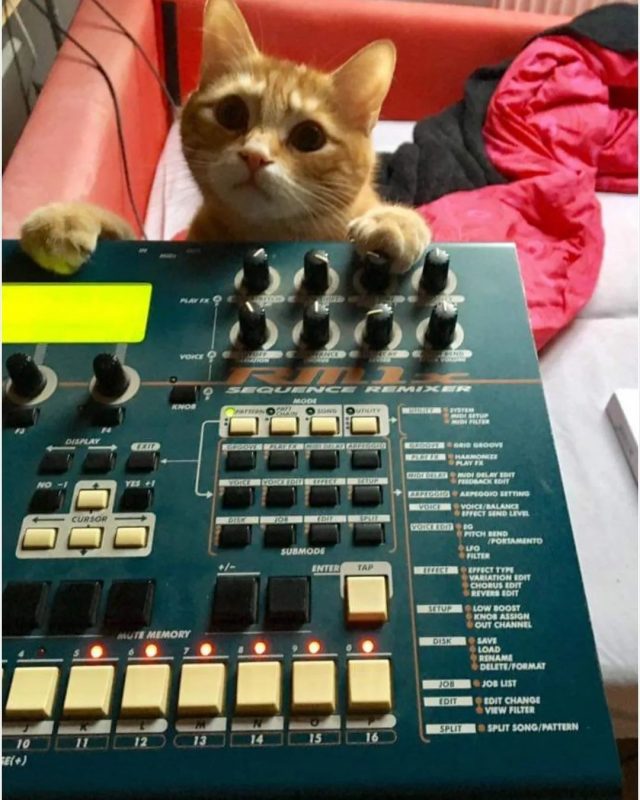
Squeaky wants to make some sequences on the Yamaha RM1x “Sequence Remixer”. From woollybackcreature on Instagram.
Such a talented cat. We are so lucky!


Squeaky wants to make some sequences on the Yamaha RM1x “Sequence Remixer”. From woollybackcreature on Instagram.
Such a talented cat. We are so lucky!
Newt is the newest member of the Rock Cats that tour with the Amazing Acro Cats. He succeeds the late great Nue as the band’s keyboardist.
You may recall the Acro Cats from previous posts – we always make a point to go see them when they’re in town – and we even had the opportunity to talk to founder Samantha Martin for CatSynth TV.
To found out more about the Acro Cats, including up coming tours and their Rock Cats Rescue organization, please visit https://rockcatsrescue.org/
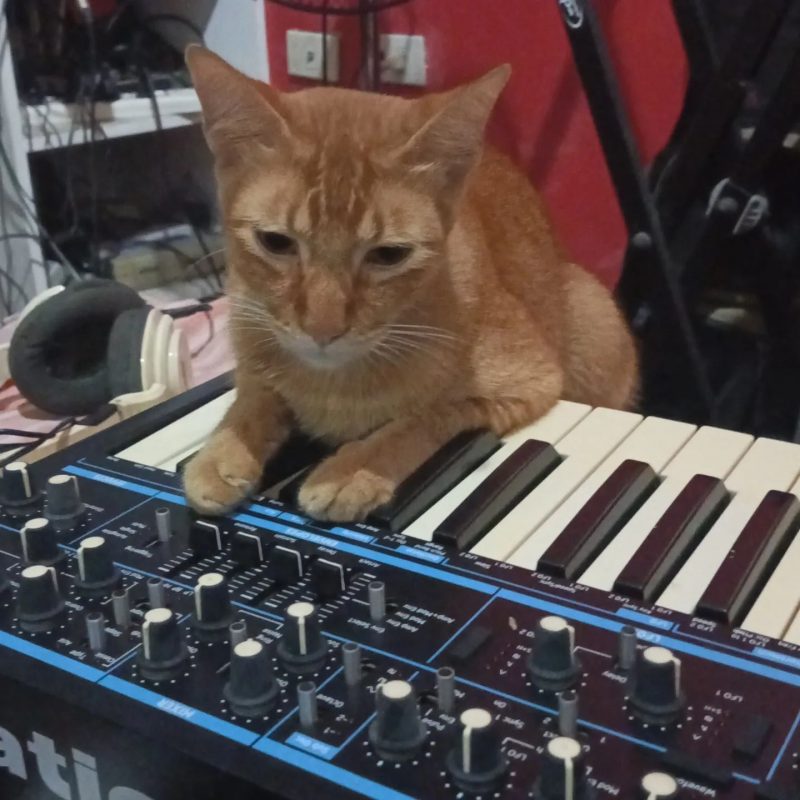
Bread gets ready to play some chords on the Novation Bass Station 2. From thedigitalpurrgatory on Instagram.
Synthcat or Catsynth?
This is indeed a vexing question that we at CatSynth often ponder.
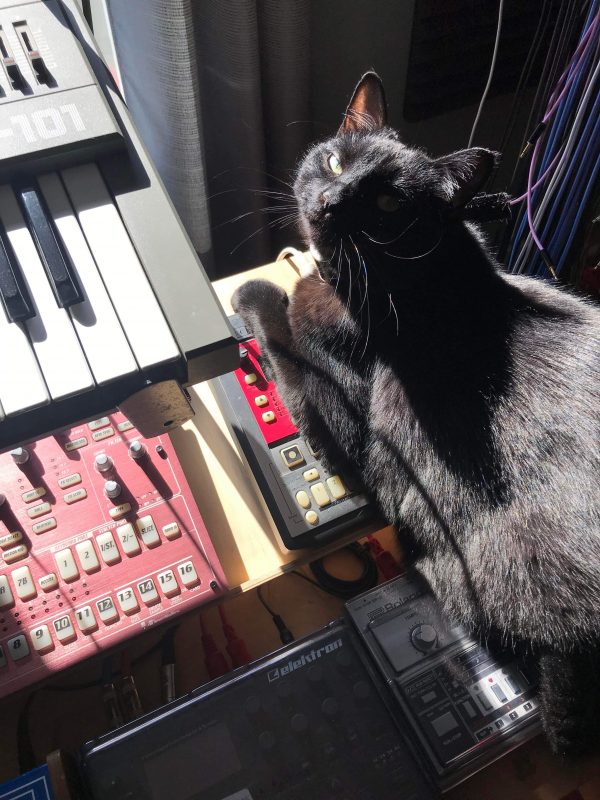
Albert has found a nice sunny spot in the studio. We see a Roland SH-101, Korg Eletribe, and Elektron Digitone next to him. It appears that he is sitting on a Roland TB-303 (or similar) with a dark panel, and another rhythm machine.
Submitted by David Cole via our Facebook page.
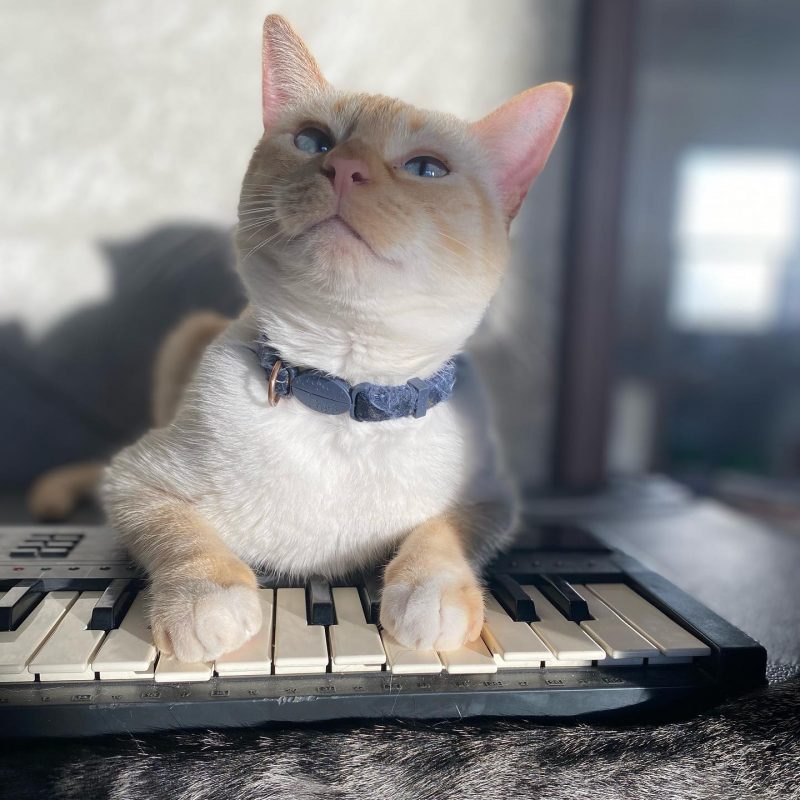
We have a couple of beautiful model shots of Shiro with his Casio SK-8
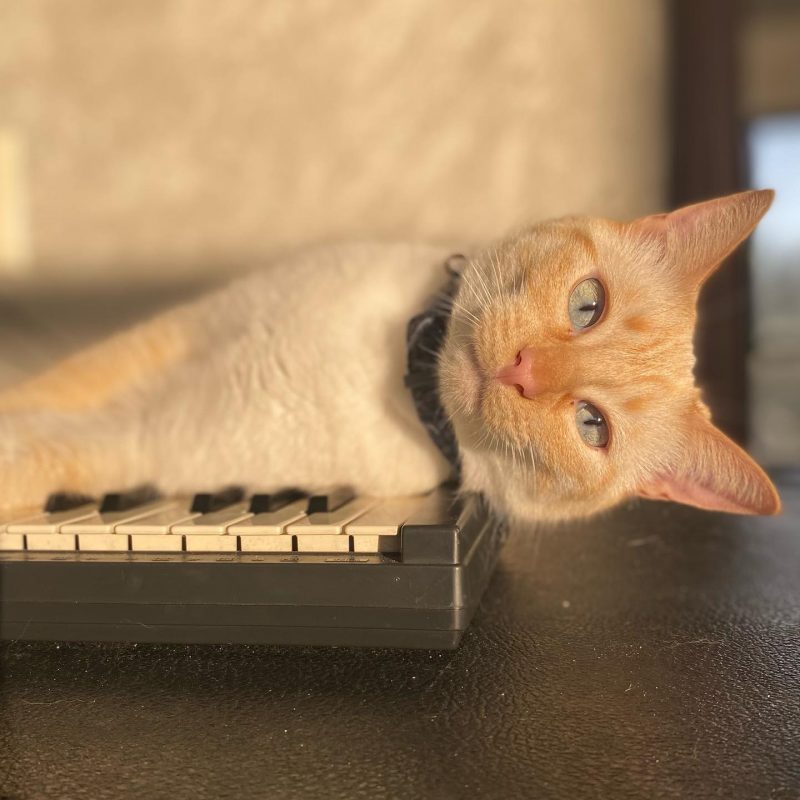
From Héctor D. Genis (@hdgenis)
Shiro feliz con su Casio SK8 creando acordes para nuevas rolitas.
My best effort as translation:
“A happy Shiro with his Casio SK-8 creating chords for new songs”
The Casio SK-8 is one of the rarer members of the SK series. It has similar ROM sounds and rhythms, and a lo-fi sampler. It also has some drum pads, which are a nice touch. It would seem to have been geared toward the educational market, as it has LEDs that light up above the keys. More details can be found here.
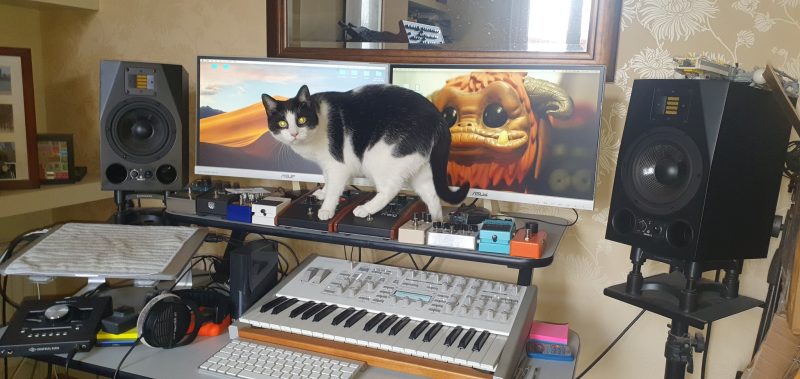
BMO (pronounced BEE-MO) takes center stage in this home studio, where we see an Access Virus Polar, sundry pedals including two Mooger Foogers, and more. From Super-Frog Saves Tokyo via Twitter.
Get a cat, they said…
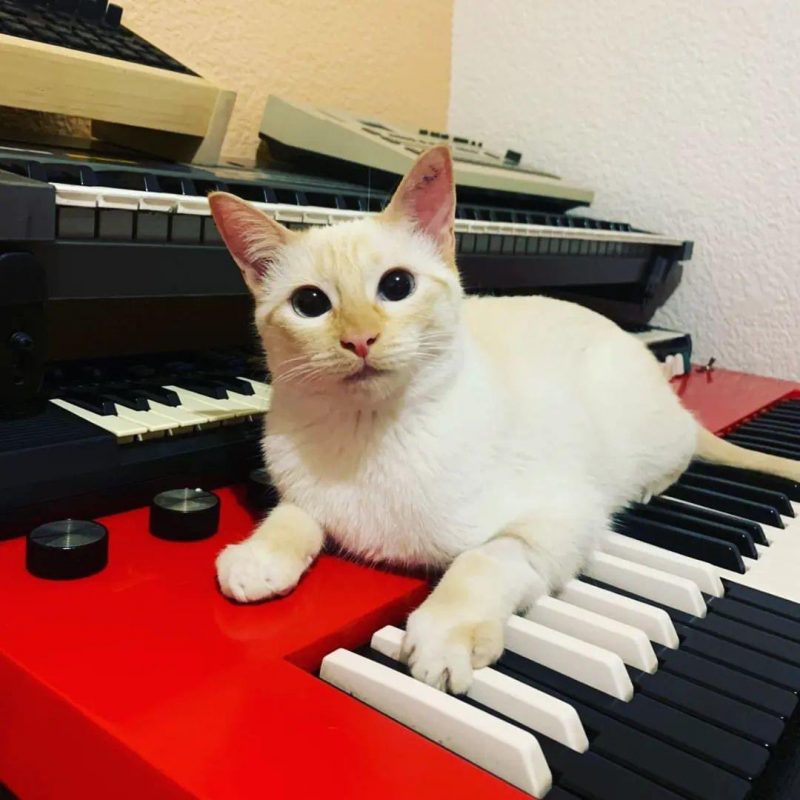
Shiro Poses adorably atop the red Yamaha YC20 organ. We also see two Casio SK-1s, a Roland JX-8P, and a Roland TR-707 drum machine.
From Héctor Genis (@hdgenis) on Twtitter.
If Shiro’s collection of instruments looks familiar, you would be correct. It is the same set that Saruman posed on last week. Siblings Shiro and Saruman live in Mexico City with their human.
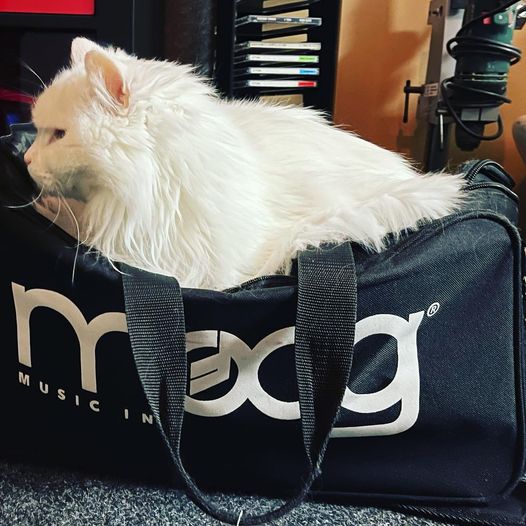
Our pal Jazzy from Eevolute Music and Technology in the Netherlands is back; he has found that this Moog bag is a nice cozy place to sit and relax.
You can see some of Jazzy’s other appearances via this tag.
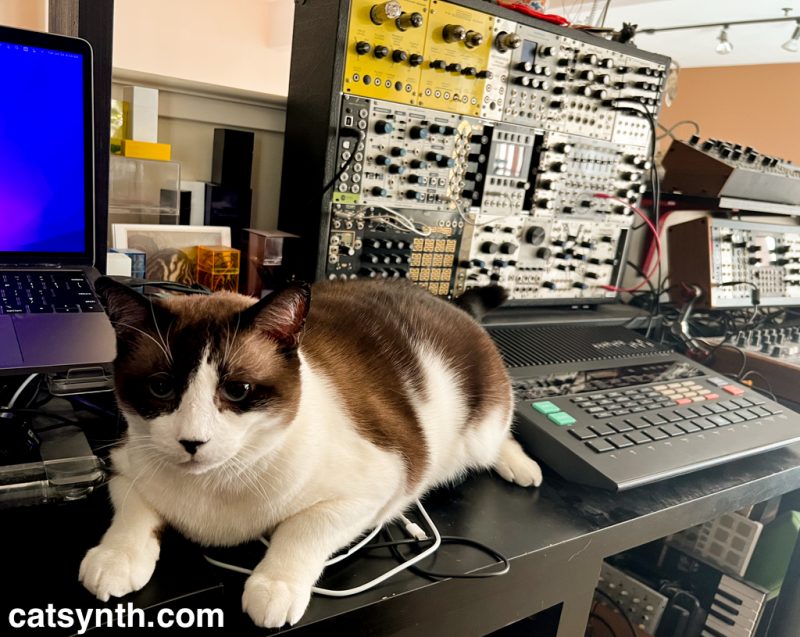
Today we have CatSynth pics with our very own Big Merp, who loves to jump up on the desk. Here we see him with our Yamaha RX5 drum machine and our massive modular system. The Metasonix modules are easy to spot, as are the Make Noise modules. We also have MOTM, Rossum Electro-music, Sputnik modular, 4MS, Malekko, Folktek, Mordax, and more as we get into the second grouping in the distance. We also see a bit of the Arturia MiniBrute 2 and Moog Mother-32. A fuller accounting can be found in the tags.
